Brownstone Boys: How to Remove Decades of Paint From Woodwork
By far the topic that we get the most emails about is the process of paint stripping.

Paint after the chemical has been applied. It’s a big mess but definitely worth it
Editor’s note: Welcome to the 57th installment of Brownstone Boys Reno, a reader renovation diary about renovating a brownstone in Bed Stuy. See the first one here. They also blog at www.thebrownstoneboys.com.
We love sharing our reno and DIY project stories. And we love hearing from people who are inspired to take on a project of their own. By far the topic that we get the most emails about is the process of paint stripping. So many people out there have beautiful historical homes with woodwork that is buried under decades of paint. It’s a tough and messy job and people have asked how our paint stripping specialist got it done so well! Our woodwork – bannister, window casings, door casings, and shutters all look amazing now that they are seeing the light of day from under all of that paint.
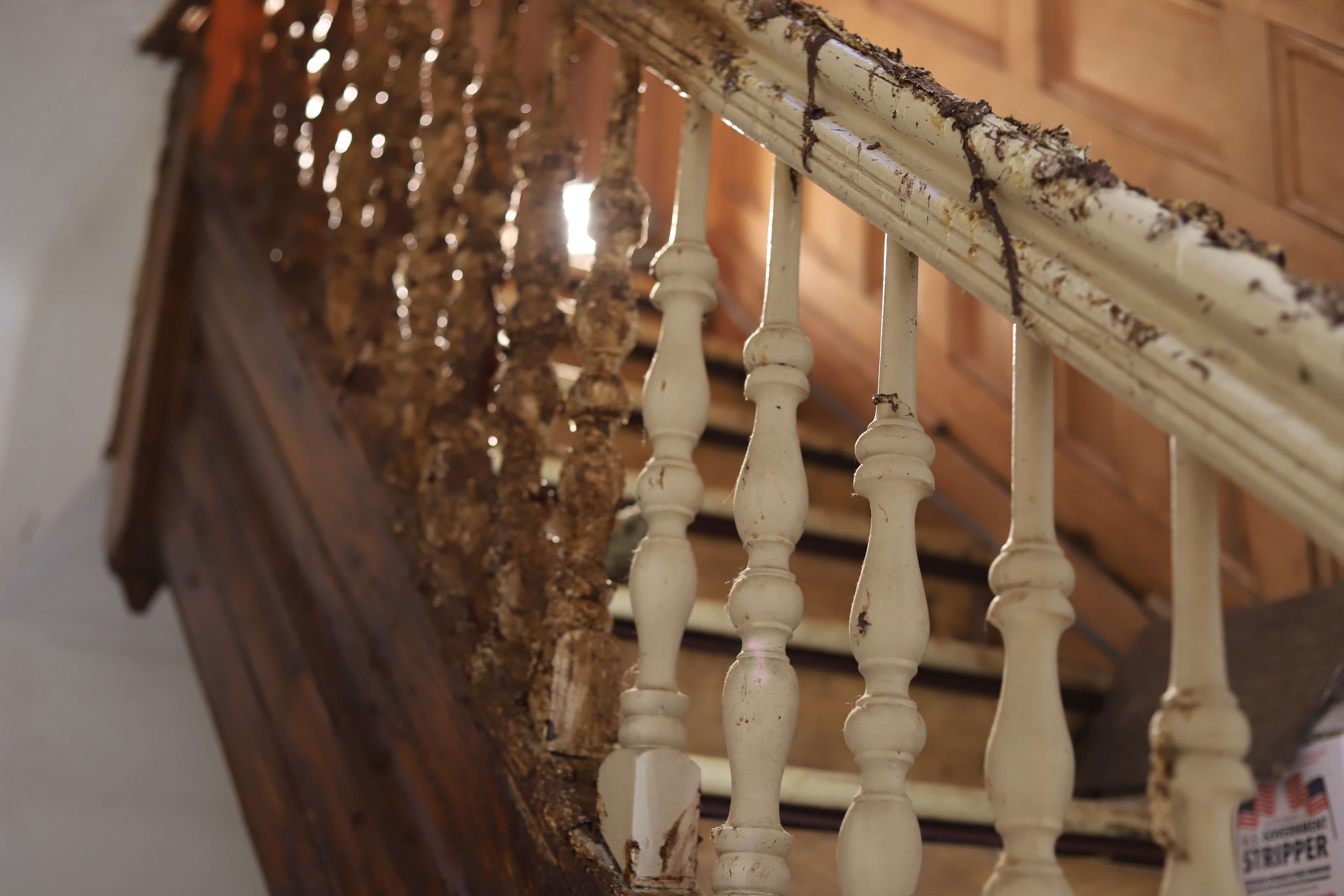
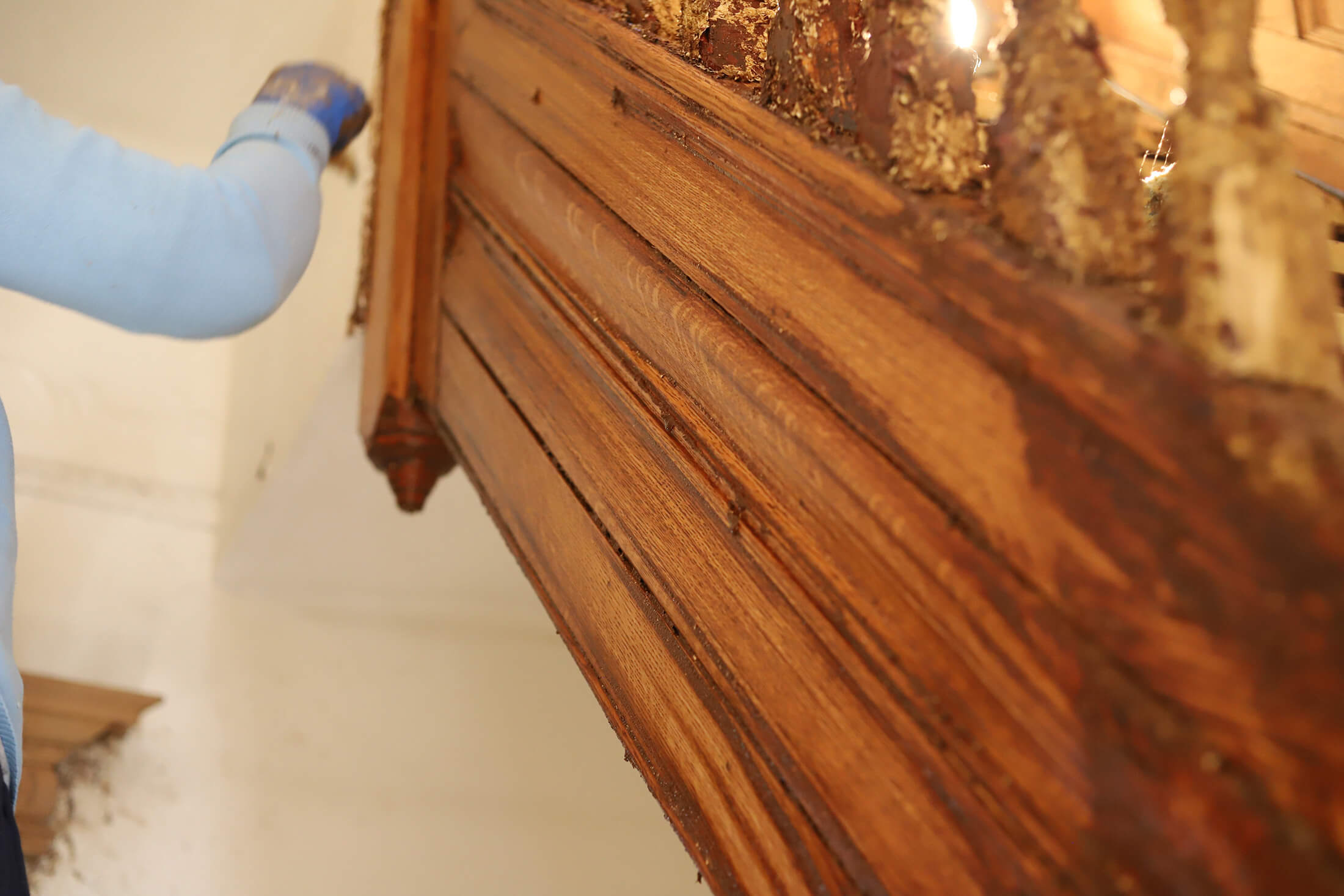
Before we dive in we need to start with a word of caution. There are dangerous chemicals involved, not to mention the possibility of lead paint, and fire from the heat gun. The process our expert paint stripper follows may not be for everyone, but it certainly does the job. If you do strip wood, please handle with the utmost care. We recommend hiring a professional, and it is probably a good idea to do it when no one is living in the house.
We were so so lucky to find our wood stripper, who has been stripping wood for more than 30 years and has handled every sort of wood, issue, and chemical in the industry. We recently caught up with her at a new job she’s working on to get a better handle on the process.
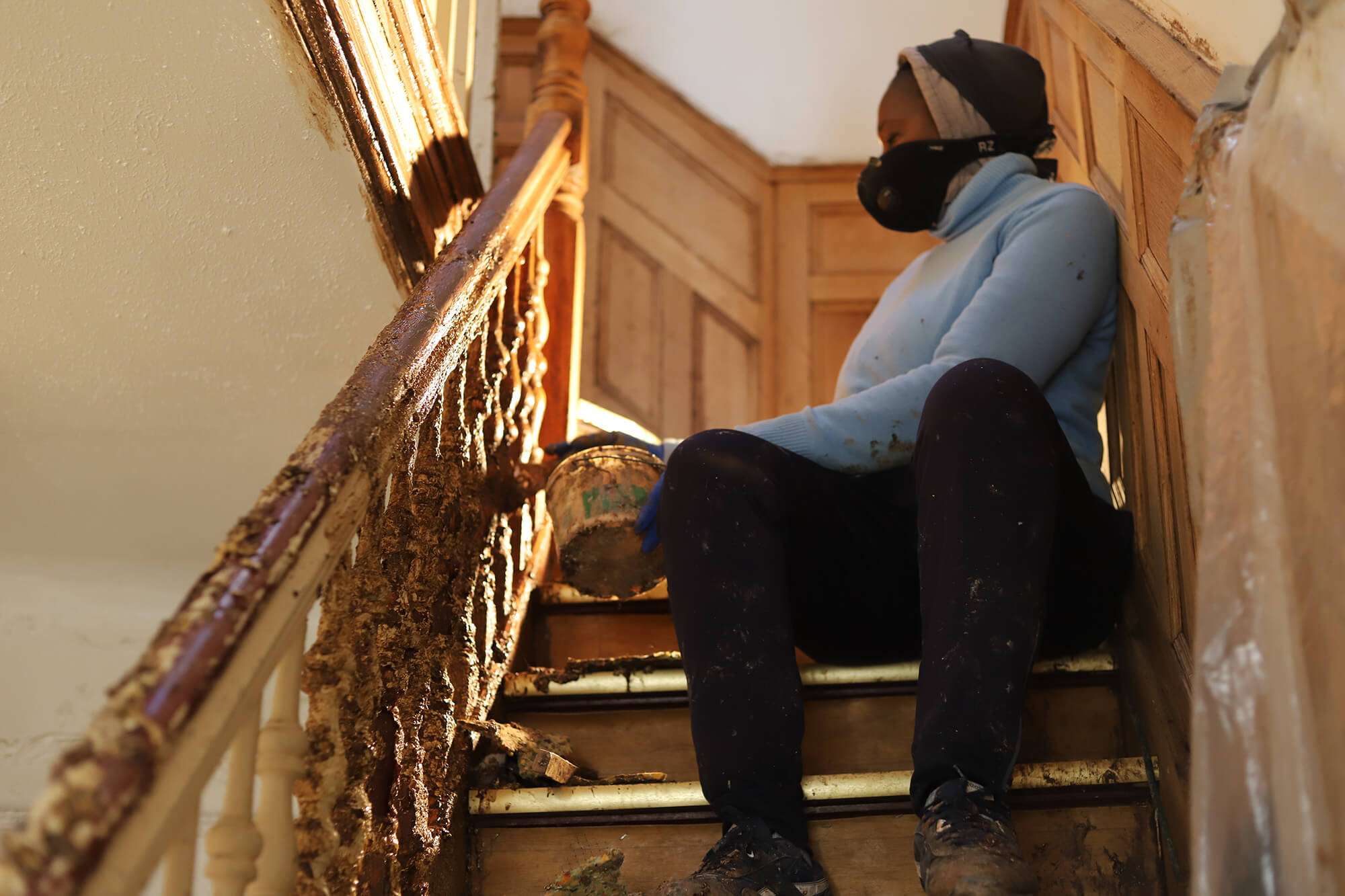
Here we go!
Items necessary:
– Gloves (lots and lots of gloves). We recommend latex under cloth gloves.
– Respirator. You want a good one that will cover the entire mouth. Chemicals will be used and who knows the history of your paint.
– Heat gun — a durable one.
– Steel wool.
– Tarp/plastic.
– Cheesecloth. A full box or large sponge — your preference.
– Wire brush and other tools used to scrape, scrub and clean.
– Chemicals recommended: US Government Stripper, Zip Strip, Jasco, Rock Miracle.
– Denatured alcohol.
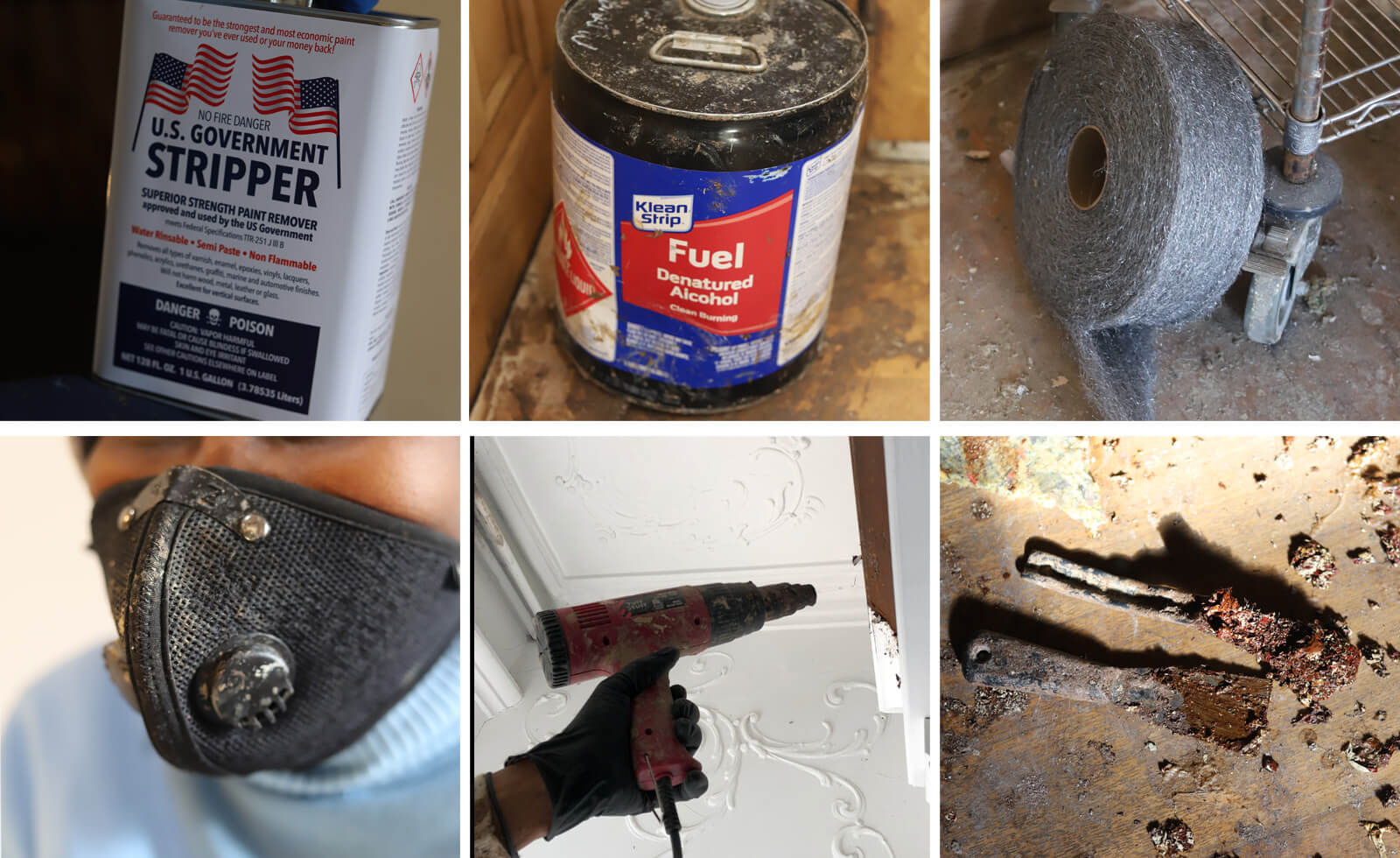
Process
1. Heat the wood you will strip with the heat gun. This will help the paint warm up and remove some layers.
2. Remove any paint that has been removed with heat gun.
3. Apply chemical. Use a spray bottle. Let chemical sit 10 to 15 minutes.
4. Clean remnants with cheesecloth or a large sponge. After the heat gun, the paint will hopefully come off in layers. Cheesecloth is a good material to wipe off the chemical. It will fall on the tarp that should be well taped to the area you are working in. Be careful not to accidentally spread paint residue to adjacent areas.
5. Use wire brush or steel wool to get areas that are more delicate and hard to strip in large quantities.
6. Wipe wood down with something like denatured alcohol and continue to clean with steel wool.
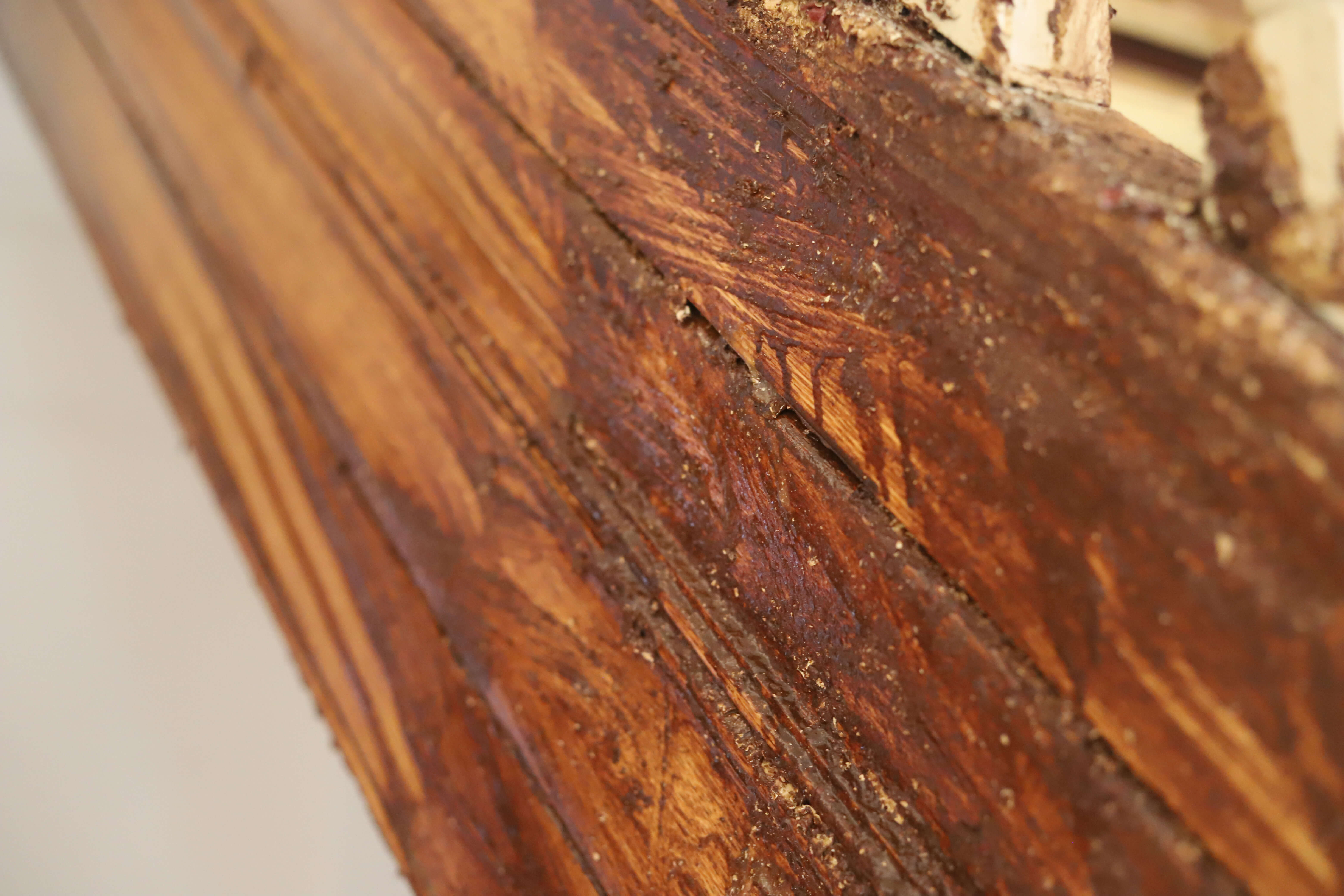
There may be other methods but this process removed every speck of paint from our woodwork, even in detailed places with lots of crevices.
[Photos by Brownstone Boys]
Related Stories
- Brownstone Boys: New Year, New DIY Projects
- Brownstone Boys: A Year in Review
- Brownstone Boys: When an Old Chimney Makes Furniture Placement a Nightmare
Email tips@brownstoner.com with further comments, questions or tips. Follow Brownstoner on Twitter and Instagram, and like us on Facebook.





What's Your Take? Leave a Comment